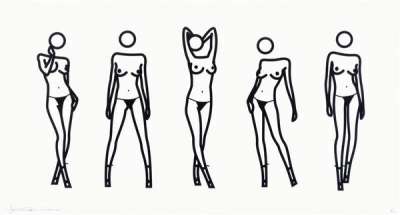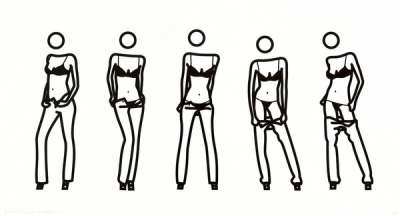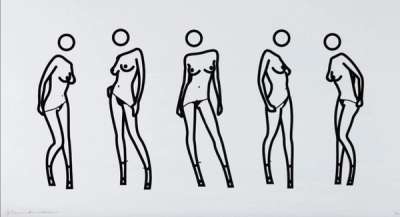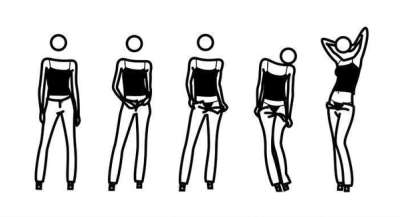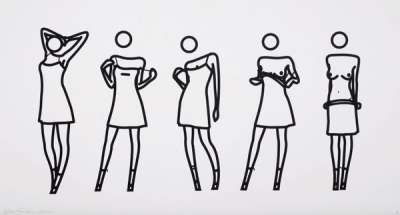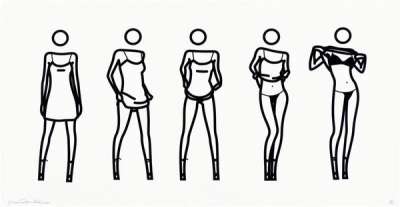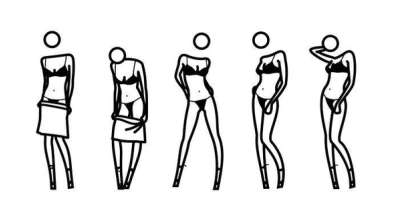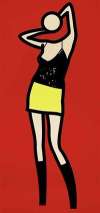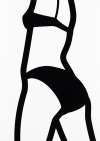Bijou
Gets Undressed
The figure in Julian Opie's Bijou Gets Undressed is alluringly anonymised, their individuality highlighted piquantly through minor personal particularities. Opie's reductive approach to the figure is key in the explicit sex appeal of the works, but it also prompts an open-ended consideration of how we relate to and resemble one another.
Julian Opie Bijou Gets Undressed For sale
Bijou Gets Undressed Market value
Auction Results
| Artwork | Auction Date | Auction House | Return to Seller | Hammer Price | Buyer Paid |
|---|---|---|---|---|---|
 Bijou Gets Undressed 2 Julian Opie Signed Print | 22 Jun 2023 | Forum Auctions London | £8,500 | £10,000 | £12,500 |
 Bijou Gets Undressed 7 Julian Opie Signed Print | 18 Jan 2023 | Phillips London | £7,650 | £9,000 | £12,000 |
 Bijou Gets Undressed 1 Julian Opie Signed Print | 18 Jan 2023 | Phillips London | £7,225 | £8,500 | £11,500 |
 Bijou Gets Undressed 5 Julian Opie Signed Print | 14 Sept 2022 | Phillips London | £14,450 | £17,000 | £23,000 |
 Bijou Gets Undressed 4 Julian Opie Signed Print | 22 Jan 2020 | Phillips London | £6,375 | £7,500 | £10,000 |
 Bijou Gets Undressed 6 Julian Opie Signed Print | 6 Jan 2019 | Lempertz, Cologne | £2,678 | £3,150 | £4,200 |
 Bijou Gets Undressed 3 Julian Opie Signed Print | 5 Dec 2015 | Koller Zurich | £4,250 | £5,000 | £6,000 |
Sell Your Art
with Us
with Us
Join Our Network of Collectors. Buy, Sell and Track Demand
Meaning & Analysis
Bijou Gets Undressed is a set of eight prints by Julian Opie rendered in his characteristic linear style, each showing the female model, Bijou, in a sequence of five different poses. As the series progresses, Bijou takes off her clothes to expose her body, whether that be a dress, a skirt or her underwear and is an example of Opie’s more sexually charged subjects.
Throughout the series, Bijou is shown with a blank circle floating above her body as her head and is rendered in Opie’s simplified linear style. In some images the figures are defined by an outline of clothing and in others are reduced to a clear-cut outline of torso, limbs and two curved lines for breasts. Interested in creating a syntax of signs to convey information or personalities in a quick and intense manner, Opie’s figures draw inspiration from public signs like those found on lavatory doors. The images in Bijou Gets Undressed are created by using this standardised version of the human figure and combining this with a digital photograph of a real person to produce an abstracted but realistic representation of the human body.
Ambiguous and alluring, the figure in Bijou Gets Undressed is anonymised, aside from the first name given in the title, due to her featureless face and simplified form. Bijou is instead defined by her sensual, elegant poses that are familiar to the viewer from advertising and mass media culture. Never erasing the personality of his models, Opie highlights the particularities of an individual through the reduction of frivolous details. Maintaining sex appeal, the anonymity of the figure allows for a multitude of interpretations from the viewer to emerge, prompting one to think about how we relate to this image and resemble one another.
Opie’s Bijou Gets Undressed series uses choreography, gestures and typical iconography of strip shows and catwalks to produce a predetermined ‘type’ that is instantly recognisable to the viewer. Opie plays into the erotic fantasies of the assumed male spectator through his sign-like visual language to unpack the repeated utilisation of the female body in media and the dominance of the male gaze.
